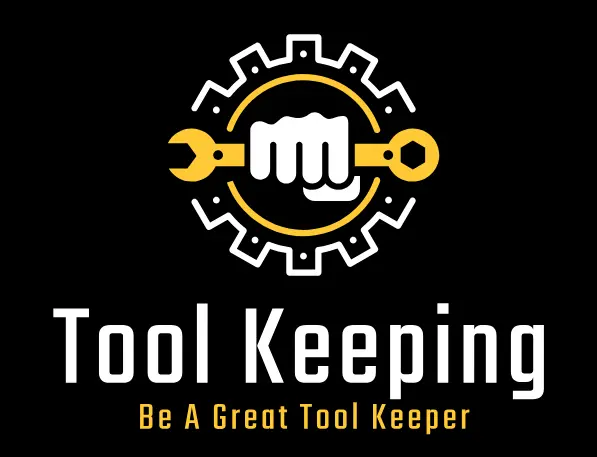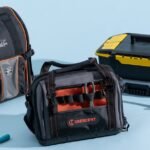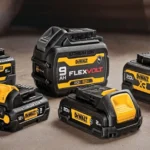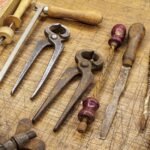A well-organized tool belt is essential for efficient workflow and easy access to tools during work. It saves time and effort, reduces stress, protects tools from getting damaged, and improves safety by reducing the risk of accidentally dropping tools. So, let’s learn how to organize your tool belt with this easy-to-understand article.
A Step-by-Step Guide For Tool Belt Organization
In this article, we will discuss how to organize your tool belt effectively, focusing on choosing the right tool belt, sorting and categorizing tools, and maximizing tool belt efficiency.
Sorting and Categorizing Your Tools
Sorting and categorizing your tools is essential for an organized tool belt. Here is a detailed explanation of this process:
Grouping Similar Tools Together
- Identify Similar Tools: Group tools that are similar in function or usage, such as screwdrivers, pliers, or wrenches.
- Place Them Together: Put similar tools in the same compartment or pocket, making finding and accessing them easier.
- Benefits: This helps you keep track of your tools and ensures that you always know where to find the specific tool you need.
Using Pockets, Loops, and Slits to Sort Tools
- Utilize Pockets: Pockets come in various sizes and shapes, and they are designed to hold different types of tools.
- Pocket Slits: These are smaller openings that can be used to store smaller tools like pencils or nails.
- Secondary Pockets: These are smaller pockets within a larger pocket that can be used to store additional tools.
- Use Loops: Loops can be used to hang tools that are too large to fit in a pocket, such as tape measures or levelers.
- Slits: Slits can be used to store tools that are too long to fit in a pocket, such as screwdrivers or wrenches.
- Benefits: Organizing your tools in this manner allows you to quickly and easily access them, saving time and increasing efficiency.
Following these steps, you can create an organized tool belt that makes your work more efficient and enjoyable. Remember, the key is to find a system that works best for you and your specific needs.
Organizing Your Tools by Dominant Hand
Organizing your tools by hand is an important step in creating an efficient tool belt. Here’s a detailed explanation of this process:
Organizing Tools for Dominant and Non-Dominant Hands
Identify Your Dominant Hand: Your dominant hand is the one you use to control the hammer, knife, and pencil.
Place Dominant Hand Tools Together: Put the tools you use with your dominant hand in the pockets or compartments on the same side of your tool belt.
Place Non-Dominant Hand Tools Together: Put the tools you use with your non-dominant hand on the opposite side of your tool belt.
Benefits: This organization method ensures that the tools you need most frequently are easily accessible and within reach, increasing efficiency and productivity.
Importance of Accessibility and Convenience
- Consider The Project: When organizing your tool belt, consider the project you will be working on and the tools you will need.
- Arrange For Maximum Comfort: Arrange your tool belt in a way that is comfortable and convenient for you, taking into account the weight of the belt and the tools.
How To Organize Your Tool Belt For Maximum Efficiency?

Maximizing the efficiency of your tool belt is crucial for an organized and productive workday. Here are some tips to help you achieve this:
Choosing a Tool Belt with Multiple Pockets
1. Consider the number of pockets: Choose a tool belt with multiple pockets to accommodate all your essential tools.
2. Allocate specific pockets: Assign specific pockets for each tool category to make it easier to find and access them when needed.
Using Foam Board To Create Smaller Dividers and Pockets
1. Cut Foam Board: Cut a block of rigid foam board, such as Styrofoam, to fit inside the pockets of your tool belt.
2. Carve Niches And Holes: Carve niches and holes in the foam board to create custom dividers and pockets for your tools.
Putting The Right Tools In The Right Pocket
1. Group Similar Tools Together: Group similar tools together based on their function or usage.
2. Organize Tools By Dominant Hand: Put the tools you use with your dominant hand in the pockets or compartments on the same side of your tool belt.
3. Allocate Specific Pockets: Assign specific pockets for each tool category to make it easier to find and access them when needed.
Conclusion
In conclusion, organizing your tool belt is essential for efficient workflow and easy access to tools during work. By following the steps outlined in this article, you can choose the right tool belt, sort and categorize your tools, and maximize tool belt efficiency. Remember, the key to a well-organized tool belt is to find a system that works best for you and your specific needs.
FAQs (Frequently Asked Questions)
-
What is the importance of organizing your tool belt?
Organizing your tool belt saves time and effort, reduces stress, protects tools from getting damaged, and improves safety by reducing the risk of accidentally dropping tools.
-
How do I choose the right tool belt?
Consider the type of work, number of pouches, comfort features, and material when choosing a tool belt.
-
How do I sort and categorize my tools?
Group similar tools together and use pockets, loops, and slits to sort tools.
-
Why is it important to organize tools by the dominant hand?
Organizing tools by the dominant hand ensures easy access and prevents mixing up tools, increasing efficiency and productivity.
-
How can I maximize tool belt efficiency?
Choose a tool belt with multiple pockets, use foam board to create smaller dividers and pockets, and put the right tools in the right pocket.








